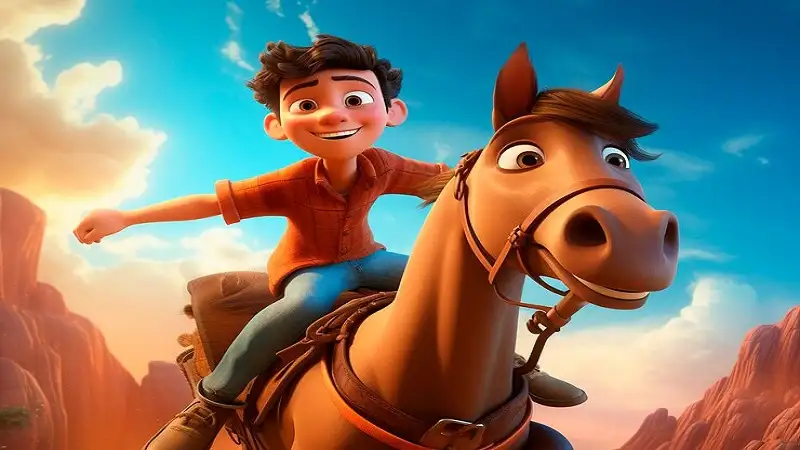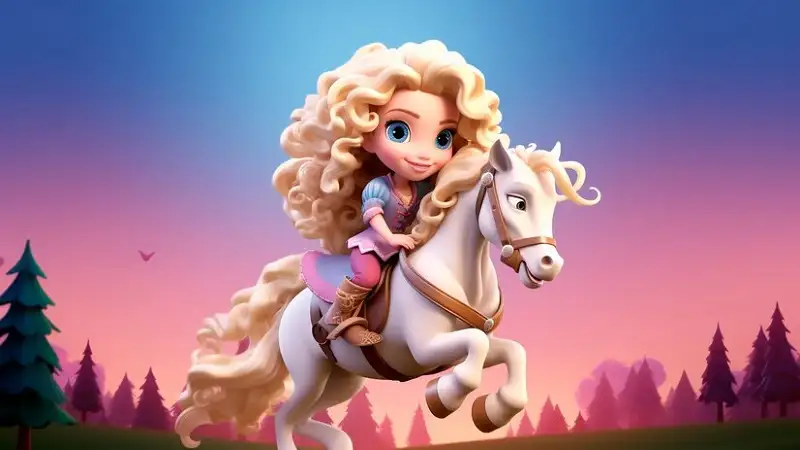Drawing:v74uyhgg9tq= Horse has long been a cherished art form, a medium through which individuals express their creativity and capture the beauty of the world around them. One of the most captivating subjects of drawing is the horse. Horses, with their grace, power, and intricate anatomy, provide artists with an opportunity to explore various techniques and styles. In this article, we will delve into the many aspects of drawing horses, from understanding their anatomy to mastering different styles and techniques.
The Anatomy of a Horse
Understanding the anatomy of a horse is crucial for any artist looking to draw this magnificent animal accurately. Horses have a unique body structure that includes several key elements:
Head and Neck
The horse’s head is distinctively shaped, featuring a long, straight profile. The eyes are positioned on the sides of the head, providing them with a wide field of vision. The neck is muscular and elongated, connecting the head to the body. Artists should pay attention to the proportions and angles when depicting the head and neck, as they significantly influence the horse’s overall appearance.
Body and Legs
A horse’s body is powerful and well-proportioned. The chest is broad, leading to a strong barrel-shaped torso. The hindquarters are particularly muscular, providing the horse with the strength to run and jump. The legs are long and sturdy, with distinct joints that need careful consideration in Drawing:v74uyhgg9tq= Horse . Understanding the leg structure, including the forelimbs and hindlimbs, is essential for capturing the horse’s grace and movement.
Hooves
The hooves of a horse are vital for its mobility and well-being. They are designed to withstand various terrains and pressures. Artists should note the shape and size of the hooves, as well as the unique features such as the frog and sole. Accurate representation of hooves adds authenticity to the Drawing:v74uyhgg9tq= Horse .
Different Breeds and Their Unique Features
There are numerous horse breeds, each with its own distinctive characteristics. Understanding these differences can enhance an artist’s ability to portray horses effectively.
Thoroughbreds
Known for their speed and athleticism, Thoroughbreds have a slim build and long legs. Their refined heads and deep chests make them easily recognizable. Artists can capture their elegance by focusing on their sleek lines and muscular structure.
Arabians
Arabians are famous for their endurance and beauty. They have a dished profile, arched neck, and high tail carriage. Their unique features allow artists to experiment with more stylized interpretations while still maintaining accuracy.
Clydesdales
Clydesdales are a draft breed known for their large size and feathering on their legs. Their sturdy build and gentle demeanor make them a favorite among artists who wish to portray strength and tranquility. Capturing the mass and proportions of Clydesdales can be particularly rewarding.
Techniques for Drawing Horses
Drawing:v74uyhgg9tq= Horse horses can be a challenging yet rewarding experience. Here are some techniques to help artists improve their skills.
Sketching Basic Shapes
Start by breaking down the horse into basic shapes. Use circles for the head and body, and rectangles for the legs. This method allows artists to establish proportions and positions before adding details.
Gesture Drawing
Gesture Drawing:v74uyhgg9tq= Horse involves capturing the horse’s movement and posture quickly. This technique helps artists understand the flow and dynamics of the animal. Spend a few minutes sketching various poses to practice capturing the essence of a horse.
Shading and Texture
Once the basic outline is established, focus on shading to add depth and dimension. Observe how light interacts with the horse’s body and use shading techniques such as hatching, cross-hatching, and stippling to create realistic textures, especially in the mane and coat.
The Importance of Reference Material
Using reference material is essential for artists striving for accuracy in their horse drawings. This can include photographs, videos, or even live models.
Observational Drawing
Observational Drawing:v74uyhgg9tq= Horse involves studying a horse in real life. Visiting stables or horse shows allows artists to see the animal’s movements, behavior, and anatomy up close. This experience can significantly enhance an artist’s understanding and ability to draw horses.
Online Resources
In today’s digital age, many online resources offer high-quality images and videos of horses. Websites, social media platforms, and art forums can provide valuable references and inspiration for artists looking to improve their horse-Drawing:v74uyhgg9tq= Horse skills.
Styles of Drawing Horses

Artists can explore various styles when Drawing:v74uyhgg9tq= Horse horses, each bringing a unique perspective and interpretation to the subject.
Realism
Realism focuses on creating lifelike representations of horses, capturing their anatomy, proportions, and textures accurately. This style often requires patience and attention to detail, making it a great choice for those seeking to refine their technical skills.
Impressionism
Impressionist Drawing:v74uyhgg9tq= Horse emphasizes the play of light and color over precise details. Artists can experiment with loose brushwork or line techniques to convey the essence of a horse rather than its exact features. This style allows for greater creativity and expression.
Abstract
Abstract art offers a completely different approach to Drawing:v74uyhgg9tq= Horse horses. By focusing on shapes, colors, and emotions rather than realistic representation, artists can create dynamic pieces that evoke feelings and interpretations unique to the viewer.
The Role of Emotion in Horse Drawing
Horses are often associated with various emotions, from freedom and strength to gentleness and companionship. Artists can tap into these feelings when creating their works.
Capturing Movement
To evoke a sense of freedom and vitality, focus on capturing the movement of a horse. Whether it’s galloping, trotting, or simply standing gracefully, the way a horse is positioned can convey powerful emotions.
Expressions and Posture
Horses have expressive faces and postures that reflect their moods. Artists should observe how a horse’s ears, eyes, and body language communicate feelings, whether they are playful, alert, or relaxed. Incorporating these elements can add depth to the artwork.
The Therapeutic Benefits of Drawing Horses
Drawing:v74uyhgg9tq= Horse is not only a creative endeavor but also a therapeutic one. Engaging in art can be a calming and meditative experience, allowing individuals to express themselves and connect with nature.
Mindfulness and Focus
The act of Drawing:v74uyhgg9tq= Horse requires concentration and presence, promoting mindfulness. Artists can immerse themselves in the process, finding joy in the details and movements of their subjects.
Emotional Release
Art can serve as a form of emotional expression. For those who have a deep connection to horses, drawing them can be a way to channel feelings of love, nostalgia, or even grief, creating a meaningful connection between the artist and their work.
Participating in Art Communities
Joining art communities can provide valuable support and feedback for artists drawing horses. These communities often encourage sharing techniques, ideas, and inspiration.
Online Forums and Social Media
Platforms like Instagram, Pinterest, and dedicated art forums allow artists to showcase their work and connect with others who share similar interests. Engaging with these communities can provide motivation and encouragement.
Local Art Groups
Consider joining local art groups or classes focused on animal drawing. These in-person interactions can foster friendships and provide opportunities for critique and growth.
Conclusion
Drawing:v74uyhgg9tq= Horse is a multifaceted endeavor that combines technical skill, creativity, and emotional expression. From understanding anatomy to mastering different styles, the journey of capturing the beauty of horses on paper is both challenging and rewarding. By utilizing reference materials, exploring various techniques, and engaging with art communities, artists can enhance their skills and find joy in the process. Whether for personal fulfillment or professional development, drawing horses offers a unique opportunity to connect with this magnificent animal and express one’s artistic vision. Embrace the challenge, and let the grace of the horse inspire your art.
